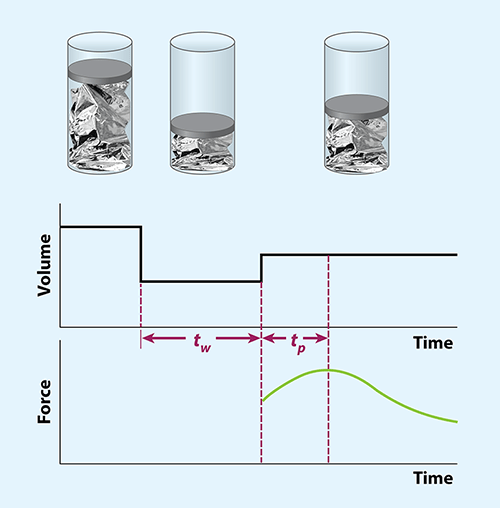Photo: Getty
Take a look at that crumpled-up piece of litter on your desk, compressed by the laws of physics and tossed aside. It remembers what you did, even if no one else does.
Crumpled paper is especially strange from a physical perspective. Have you ever noticed that physics problems always use really simple things? Like a ball rolling down a wedge, two perfectly rectangular blocks on a weightless pulley, or a perfectly-engineered spring. Well, physicists know a whole lot less about more complex things — even candy wrappers — than you’d think they do.
Take a crumpled sheet of mylar, the metal that lines candy wrappers. A team of Harvard scientists recently figured out that the sheet retained a memory of how long it was compressed for. But the research transcends playing with trash. They think these so-called disordered materials have a lot of science hiding in them that we’re only just beginning to understand.
“It’s the least understood phase of matter and probably the most common in a practical way,” Shmuel Rubinstein, one of the paper’s authors and a professor of applied physics at Harvard University, told Gizmodo. “But disorder has more structure than we think.”
The experiment was simple, to say the least. Harvard researcher Yoav Lahini and his teammates put a piece of mylar into a cylinder and squeezed down on it with a weight. After a set amount of time, they lifted the weight a little bit, and timed how long the mylar continued to exert an upward force as it expanded.
That time was proportional to the amount of time it had been squeezed for — meaning if you crumple up a candy wrapper and then let go, its structure locks in information on how long the crumpling lasted. The researchers published their results in the journal Physical Review Letters this past week.

Image: Lahini et al
This might sound obvious if you’ve ever played with a piece of foam like an earplug, but there is no reason that it should make sense. “I don’t know how it does this,” said Rubinstein. He thought that maybe each and all of the mylar’s crumpled-up faces were like bits in a computer, and the information is stored in a sort of popped-in or popped-out phase. This was just speculation, though. Again, the reason you don’t learn about the physics of the stuff you actually use on a daily basis is because scientists barely know anything about it.
Most surprising about this research was the fact that this relaxation behaviour looked especially similar to relaxing behaviour exhibited in glass when you heat it up and then cool it — its structure (extremely) slowly relaxes and begins to flow like a viscous liquid. No one really understands why it does this. In fact, lots of these disordered systems — be they glass, plastics, or piles of sand — might show similar behaviours. “I think it’s striking,” said Rubinstein. “All amorphous systems all more alike [than we think.]”
I asked whether Rubinstein thought the work would be controversial, given its generalizations. “I think in general that’s the tension between physicists, engineers and material scientists. Physicists overgeneralize,” he said. “But I think we’re doing this in a convincing way. I don’t think we’re offending anyone too much.” Ultimately, that’s up to engineers and material scientists to decide.
So, next time you crumple up a candy wrapper and toss it on the ground, take a minute to watch it unfold, revealing the secrets of the universe. It knows what you did.
